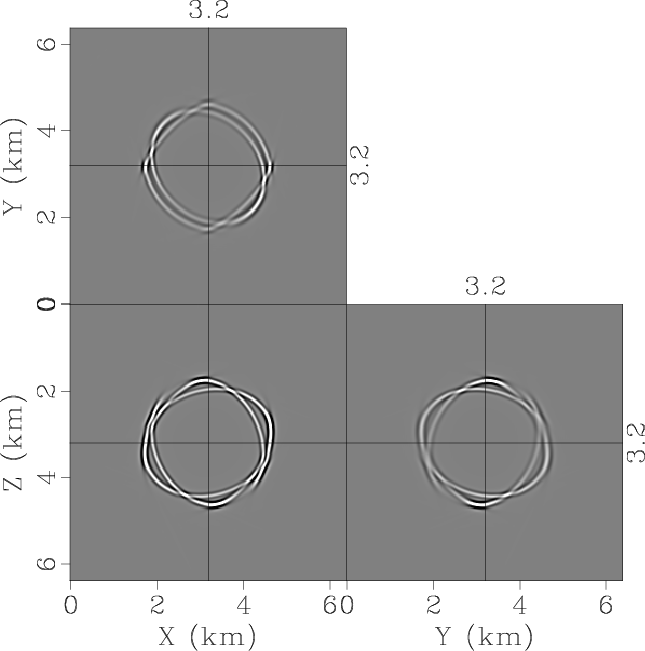A new paper is added to the collection of reproducible documents: Simulating propagation of decoupled elastic waves using low-rank approximate mixed-domain integral operators for anisotropic media

In elastic imaging, the extrapolated vector fields are decoupled into pure wave modes, such that the imaging condition produces interpretable images. Conventionally, mode decoupling in anisotropic media is costly as the operators involved are dependent on the velocity, and thus are not stationary. We develop an efficient pseudo-spectral approach to directly extrapolate the decoupled elastic waves using low-rank approximate mixed-domain integral operators on the basis of the elastic displacement wave equation. We apply k-space adjustment to the pseudo-spectral solution to allow for a relatively large extrapolation time-step. The low-rank approximation is, thus, applied to the spectral operators that simultaneously extrapolate and decompose the elastic wavefields. Synthetic examples on transversely isotropic and orthorhombic models show that, our approach has the potential to efficiently and accurately simulate the propagations of the decoupled quasi-P and quasi-S modes as well as the total wavefields, for elastic wave modeling, imaging and inversion.
